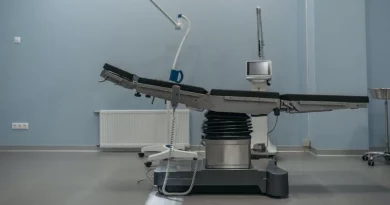The Life Cycle of Your Car: From Purchase to Disposal
Every car has a life cycle. From the moment it gleams in the showroom to its last mile on the road, each phase of a vehicle’s life has unique aspects and requirements.
This article aims to walk you through these phases, offering helpful advice and guidance along the way.
Introduction: The Journey of a Car
Understanding the journey of a car, from its production to its eventual disposal, helps us make better decisions as car owners.
This knowledge can guide us in regular maintenance, recognize when our vehicle’s time on the road is nearing its end, and choose the most responsible disposal methods.
From Purchase to Driveway: The First Drive
The first phase of your car’s life begins when it is driven after making the purchase. Whether that is from a dealership or a private seller.
This is an exciting time for any car owner, but it also comes with a set of responsibilities and challenges.
Choosing the Right Car
The first step to a rewarding car ownership experience is choosing the right vehicle.
This involves considering factors like the vehicle’s purpose, the owner’s driving habits, and the costs of owning and maintaining the vehicle.
In choosing the right car, potential owners should also consider factors such as fuel efficiency, size, safety ratings, and brand reliability.
If you plan on keeping the car for a long time, it’s also crucial to think about the long-term costs of owning the car, such as insurance, maintenance costs, and also the availability and price of parts.
The First Maintenance
After purchasing a car, it’s essential to schedule the first maintenance check. This ensures that the vehicle is in top condition and helps catch any potential issues early.
The first maintenance check might include general safety checks, among other things. This initial maintenance can also serve as a benchmark for future servicing schedules, helping you keep your vehicle in top shape for years to come.
Years on the Road: The Car’s Prime
As the car matures and hits its prime, it will ideally offer a smooth and enjoyable driving experience. This phase is often the longest in the car’s life cycle, but it also requires regular attention to ensure it continues running optimally.
Regular Servicing and Its Importance
Regular servicing is crucial to keep a car in its prime. It can help prevent minor issues from becoming major problems and extend the life of the vehicle.
Servicing can include tasks such as oil changes, brake inspections, tire rotations, and fluid checks. These regular checks can help keep your car running smoothly and efficiently. It also provides an opportunity for mechanics to catch any potential problems before they become serious issues.
Upgrades and Enhancements
During this phase, owners may choose to upgrade or enhance their cars with aftermarket parts or new technology. These improvements can enhance the vehicle’s performance, safety, and comfort.
Upgrades can range from new tires for improved handling, and sound system enhancements for better audio quality, to adding advanced safety features like rear-view cameras.
Remember, while these enhancements can improve your driving experience, it’s essential to ensure they are professionally installed and don’t affect your car’s warranty.
When Problems Start: Identifying Signs of Aging
As your car ages, it may start showing signs of wear and tear. Recognizing these signs early can help owners decide when it’s time to start thinking about the next phase.
Common Issues in Older Cars
Older cars may begin to experience common problems like engine issues, rust, or worn-out parts. Regular check-ups can help identify these issues before they become serious.
These issues can include things like decreased fuel efficiency, brake deterioration, or electrical problems.
Older cars may also have worn-out suspension and steering components which can affect the car’s handling.
This is where regular inspections can help you stay on top of these issues and address them promptly.
Repair or Replace? Making the Decision
When facing significant repairs, car owners must decide whether to fix the car or consider replacing it.
This decision often depends on factors such as the cost of repairs, the car’s current value, and the potential longevity of the vehicle after repairs.
End of the Road: Towards Responsible Disposal
Eventually, every car reaches the end of its usable life. When this time comes, it’s crucial to consider responsible disposal methods to minimize environmental impact.
The Environmental Impact of Dumped Vehicles
Discarding cars irresponsibly can have significant environmental implications, including soil contamination and waste accumulation.
As car owners, we must understand these impacts and take responsibility for disposing of our vehicles properly.
Options for Car Disposal
Several options exist for responsibly disposing of an old car, including selling it privately, trading it in at a dealership, or using a car removal service. The choice depends on the condition of the vehicle and the owner’s preferences.
While selling or trading in may yield some return, they often require more effort. Car removal services, on the other hand, offer a hassle-free solution, especially for cars that are no longer in running condition.
Responsible Disposal: The Role of Car Removal Services
Car removal services offer a convenient and eco-friendly option for disposing of old, unwanted cars. They not only take the vehicle off your hands but also contribute to recycling efforts.
How Car Removal Services Work
Car removal services typically involve a simple process: they assess the car’s condition, offer a price, and then tow the vehicle away.
Once a price is agreed upon, the service will handle the paperwork and remove the car, often at no cost to the owner.
The car is then either dismantled and the usable parts are resold or reused. Or if it’s in very poor condition, it may be sold as scrap metal.
Either way, the materials are recycled and reused, contributing to a more sustainable process than traditional car disposal methods which may involve sending trash to landfills.
Benefits of Using Car Removal Services
Using a car removal service has several benefits, including convenience, potential financial return, and environmental responsibility. These services handle the entire process, making it easy for car owners to dispose of their vehicles responsibly.
Conclusion: Full Circle of a Car’s Life Cycle
From the first drive to the final disposal, understanding a car’s life cycle can help us make informed decisions at every phase.
By taking a responsible approach to each stage, we can enjoy the journey of car ownership while minimizing our environmental impact.




